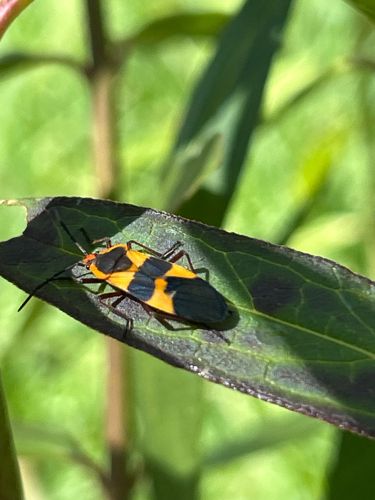Large Milkweed Bug
Scientific Name: Oncopeltus fasciatus
Order & Family: Order: Hemiptera, Family: Lygaeidae
Size: Approximately 10-18 mm (0.4-0.7 inches) in length

Natural Habitat
Commonly found in areas where milkweed plants grow, such as fields, meadows, roadsides, gardens, and open woodlands. Their presence is strongly tied to the distribution of milkweed.
Diet & Feeding
Mainly feeds on the seeds of milkweed plants (Asclepias species), using their piercing-sucking mouthparts to extract fluids. They may occasionally feed on other plant seeds or decaying vegetation.
Behavior Patterns
Adults are often found in groups on milkweed plants. They are slow-moving and conspicuous due to their warning coloration. Females lay eggs on milkweed plants. Nymphs, which resemble smaller versions of the adults, also feed on milkweed.
Risks & Benefits
Generally considered harmless to humans and do not bite or sting. They can be considered beneficial in some natural ecosystems as part of the food chain. In gardens, large infestations on milkweed can potentially reduce seed production if milkweed is being grown for monarch butterflies, but they rarely cause significant damage to other plants. Their bright coloration serves as a warning to predators, indicating their unpalatable nature due to the cardiac glycosides absorbed from milkweed.
Identified on: 8/26/2025